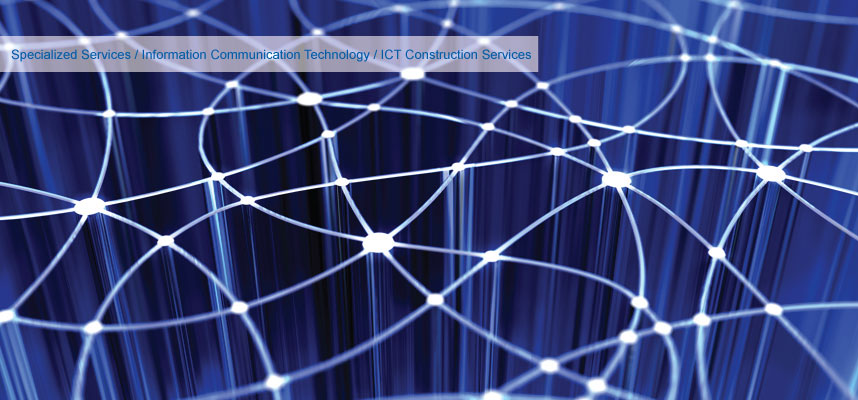INDOCHINA INTERNATIONAL CONSULTING CO., LTD
HO Add: 62L/36 Nguyên Hồng, Ward 11, Bình Thạnh District, HCMC - Vietnam
Biz Office Add: #48 Road No 11, Quarter 6, Hiệp Binh Chánh Ward, Thủ Đức, HCMC - Vietnam
®Source: http://viipip.com should be clearly quoted for any use of information extracted from our website.
Publication permit No: 60/GP-TTĐT , April 05, 2010.

GE optimises power plant efficiency
Date: 6/27/2016 9:47:55 AM
The Digital Power Plant concept – an Industrial Internet solution that couples software and hardware for the analysis and optimisation of a power plant, and one which is leading the digital transformation of the global power industry, came closer to Vietnam last week with GE Power’s official introduction of this solution to Vietnam’s power producers.
Luis Gonzalez, chief digital officer of GE Power’s Digital Power Services in the Asia Pacific told VIR’s Hoang Anh that he saw great interest from Vietnam’s power producers for a solution that could meet their demands for more efficient power plants and a reduction in emissions.
The Digital Power Plant, launched by GE last September, is quite a new concept for the Vietnamese market. Following talks with Vietnamese power companies, how do you evaluate the level of their interest in GE’s digital solutions?
Vietnamese power producers all want to become more efficient and reduce their emissions. They want to have better control of their plants’ operations, and I think this target can be achieved by evolving their practices and making sure that the plants run cheaper, safer, and more efficiently. The opportunities and challenges we see Electricity of Vietnam (EVN) addressing is the same that we see in our own market. They want to be more reliable, more efficient, and they genuinely care about the environment. From what I have seen at working sessions with Vietnamese partners, I could say that they are eager to address their issues and they agreed with us that there’s potential for us to collaborate. They hope that we would partner quickly, and their expectation for GE is for us to create a vision with practical actions that move EVN towards a solution where they can take advantage of our digital services.
Have you secured any contracts to make a model digital power plant in Asia? What challenges do you expect for Vietnamese power plants to be digitally transformed given its unique power market?
Digital power plants require multiple parts to be joined together digitally. It means they put the generator, the boiler, turbines, many of the plant’s components, and the unit assets on a digital platform. In Asia, it’s at an early stage as we have had very advanced plants in Japan that are digitising their assets but they haven’t got to the point that can be called a digital power plant. It is the same in Malaysia, Indonesia, and Singapore. I can’t tell you we have fully achieved a digital power plant like in the US or Middle East, but we’re progressing towards that.
Vietnam has challenges based on the type of industry it has. For this type of industry there are pros and cons. On the pro side, because it’s an integrated utility that does everything, it’s easier to make decisions that have an impact on the overall value change. The challenge is because Vietnam has a very central generation of coal, with little diversification on the competition aspect of generation and customer retailing, there will be less drivers from the market, which means Vietnam will rely more on internal drivers like EVN and regulatory measures.
Nevertheless, Vietnam has a great opportunity because it has the need for better generation, but with an integrated ability to affect the whole market. And so, because EVN is the sole decision maker, if it commits to a digital transformation roadmap, it will be able to have efficiency not only on the power generation front, but also in terms of distribution and for the benefit of customers. This can turn a disadvantage into an advantage because with a committed company, Vietnam can turn things around faster than a more fragmented market can.
Vietnam might seem challenging in some ways, but EVN has a strong demand for new products, fast growth in the economy, and abundant domestic sources of fuel, so they actually have some of the ingredients that the integrated utility was created to address – which is “how do we get more power to more people reliably and affordably?” So it’s a good challenge.
Does a digital power plant require green-field investments, and does GE also offer financing solutions to customers?
It depends. The first layer to get to the digital power plant is connectivity. So you have to make sure you have sensors in your equipment. And sometimes that means you have to replace equipment. The second layer is you have to have the ability to manage the data and transform it. In some cases, that will require getting new types of instruments. Now, in the case of EVN, a lot of their plants are fairly new. Newer plants tend to already have the sensors, so the need to buy new equipment is diminished. But until we do a proper assessment of what a digital power plant will be like for each customer, it’s hard to know if there’s a need for equipment investment, and what this will be in proportion to the tech, process, and people investments.
What we see when customers go through digital transformation is that the biggest effort is not in dollars or VND. It’s a paradigm shift, understanding that the vision of their businesses has to be a bit different, that they need to use information to make more intelligent decisions so as to enable the organisation, processes, and technology. It’s easy to start small, fail quickly, and learn from there as long as you have the right vision for digital transformation.
In principle, most of our agreements with companies that want digital transformation are collaboration agreements. It means we look to have a vested interest from both parties. So GE’s willing to invest when the customer commits to go down this path with GE. We plan to and always have the flexibility to incentivise our partners to go down this path with us.
(Source:vir.com.vn)
- FDI capital continues to pour into Vietnam (6/11/2025 1:20:33 PM)
- Thanh Hoa receives good news: Preparing to have an additional industrial park of up to 470 hectares, creating jobs for nearly 30,000 people (6/11/2025 1:15:09 PM)
- Industrial Park Real Estate: Waiting for the New Generation of FDI (6/11/2025 1:10:15 PM)
- A wealthy Vietnamese city will have two special economic zones after the merger (6/11/2025 1:04:42 PM)
- 30 billion USD capital FDI in Việt Nam by 2025, a series of "ông big" races to expand the land fund (6/11/2025 12:55:26 PM)
- the 2nd largest city in the North will start construction on an international economic zone (6/11/2025 12:50:20 PM)
- Japanese giant Sumitomo continues to want to build an industrial park in the countrys fourth smallest province. (6/11/2025 12:40:45 PM)
- 3 foreign corporations want to invest billions of dollars in Ba Ria - Vung Tau (6/11/2025 12:34:30 PM)
- Lotte Group member starts construction of nearly 1,000 billion VND logistics center in the province with the most industrial parks in Vietnam (6/11/2025 12:33:26 PM)
- Forming a regional center for manufacturing spare parts and components (6/11/2025 12:24:08 PM)
- Vietnams first wafer factory is about to start construction (6/11/2025 12:19:09 PM)
- Dong Nai attracts foreign investors (6/11/2025 12:13:27 PM)
- Tay Ninhs largest industrial park welcomes a $150 million high-end knitted fabric factory project (6/11/2025 12:11:00 PM)
- (6/11/2025 12:09:10 PM)
- Vietnam will become a destination for Chinese investors in the future (11/6/2023 1:03:19 PM)

- FDI capital continues to pour into Vietnam
- Thanh Hoa receives good news: Preparing to have an additional industrial park of up to 470 hectares, creating jobs for nearly 30,000 people
- Industrial Park Real Estate: Waiting for the New Generation of FDI
- A wealthy Vietnamese city will have two special economic zones after the merger
- 30 billion USD capital FDI in Việt Nam by 2025, a series of "ông big" races to expand the land fund










 ADB: Vietnam’s 2009 GDP growth to be highest in South East Asia
ADB: Vietnam’s 2009 GDP growth to be highest in South East Asia MGM Grand Ho Tram: Vietnam’s First ‘Las Vegas Style’ Integrated Resort
MGM Grand Ho Tram: Vietnam’s First ‘Las Vegas Style’ Integrated Resort Nha Trang’s Twin Towers project licenced
Nha Trang’s Twin Towers project licenced Foreign investors still have good opportunities in Vietnam
Foreign investors still have good opportunities in Vietnam Sierra Wireless gets a foot in Vietnam’s ICT market
Sierra Wireless gets a foot in Vietnam’s ICT market